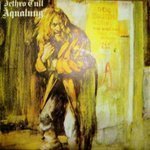Why is it so difficult to inflate motorbike tyres?
-
Recently Browsing 0 members
- No registered users viewing this page.
-
Topics
-
-
Popular Contributors
-
-
Latest posts...
-
13
Analysis Trump’s 50-Day Pause: Russia’s Green Light for Ukraine Push
As I've already stated Putin is a bad man, he won't listen to me and he kills keeps killing a lot of people, and killing a lot of people is a really bad thing. But I think I've decided to let them kill a lot of people for another couple of months. I don't think it's going to really make that much difference, who's going to miss another 10,000 dead women and children anyway? -
10
USA Legal Uproar as Trump Expands Mandatory Immigration Detention
Tell us you're confused about the 1798 Alien Enemies without saying you're confused about the 1798 Alien Enemies. -
7
Economy Thai Farmers Sound Alarm as US Trade Talks Threaten Local Agriculture
Ruminants are adapted to eating high cellulose diets e.g. grass not seeds (aka maize kernels) - fully agree corn-fed cattle are not prime beef. Maize feed beef is bland. Main issue, as you point out is additives, hormones & other allowances (rat hair, faecal bacterial allowances which degrades the quality of certain US foods). USA has some amazingly high quality food if you look carefully. -
380
Do you know your wife/girlfriends body count?
6 people disagreed with you. They can see the ego. We like Thailand. You hate it. You are the one that got it wrong yet you blame strangers on the internet for your mistakes. -
7
Economy Thai Farmers Sound Alarm as US Trade Talks Threaten Local Agriculture
Are there any Americans here that know what the price of pork is in the USA. Cannot fathom how they could manufacture, freight and sell less than the price of local pork. -
6,676
-
-
Popular in The Pub



.thumb.jpeg.d2d19a66404642fd9ff62d6262fd153e.jpeg)








Recommended Posts
Create an account or sign in to comment
You need to be a member in order to leave a comment
Create an account
Sign up for a new account in our community. It's easy!
Register a new accountSign in
Already have an account? Sign in here.
Sign In Now